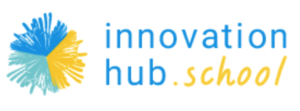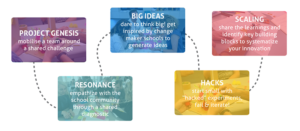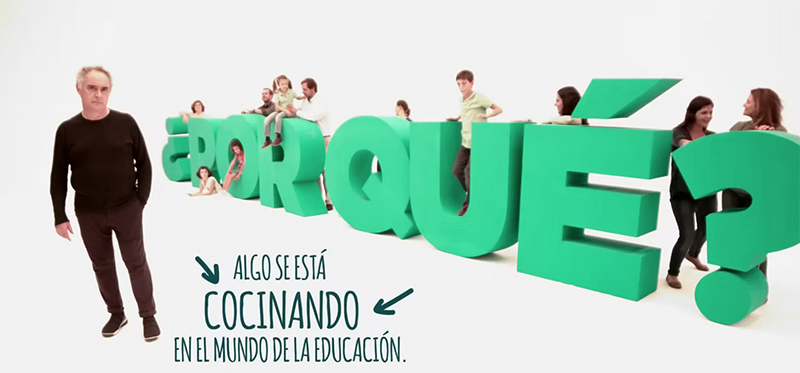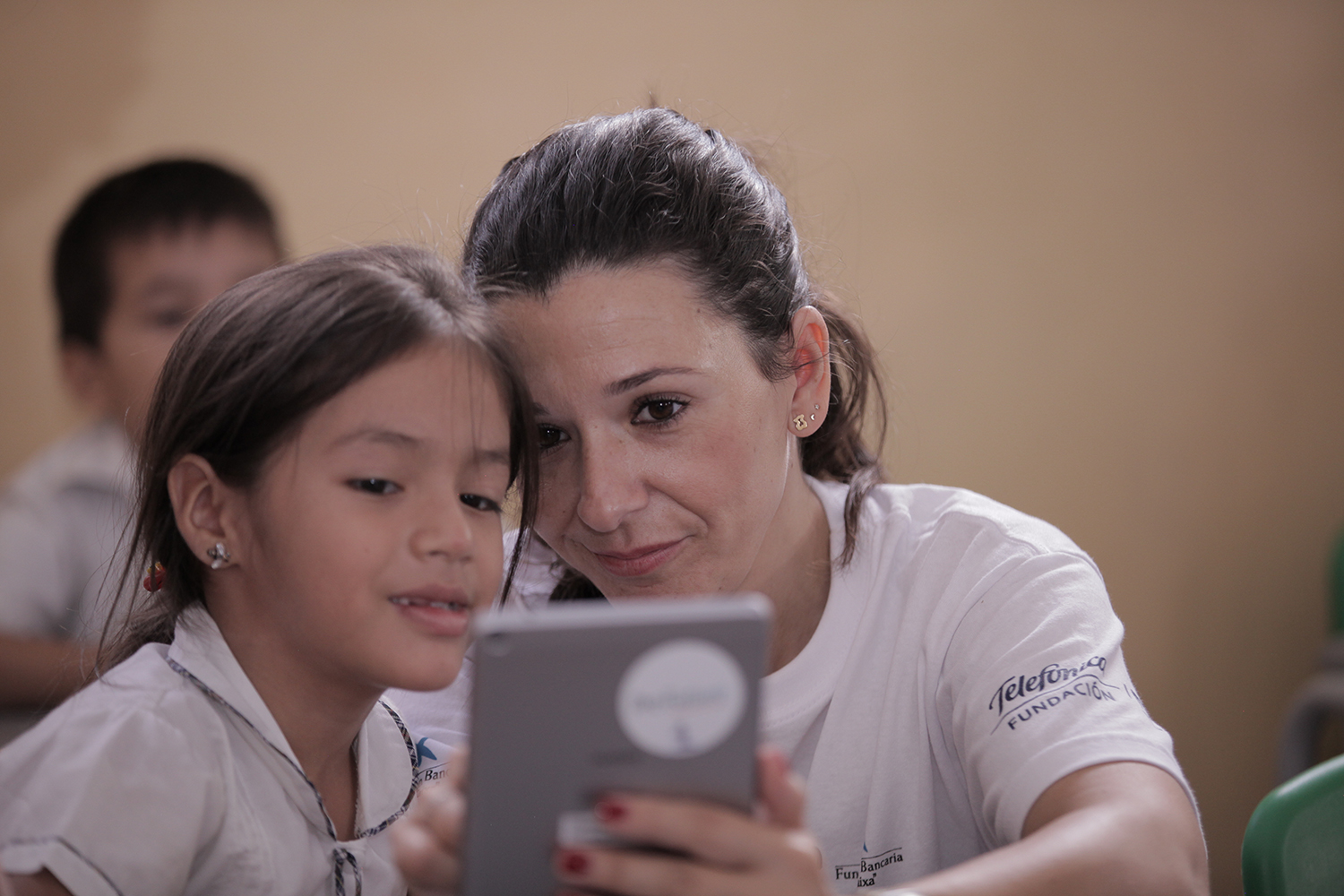It’s the buzzword. Innovate. From the Latin innovare. According to the RAE dictionary, to change or alter something, introducing novelties. All companies that consider themselves modern have an innovation department that helps them to introduce significant changes and improvements to an idea, product, service or process, with the aim of creating something new, more efficient or more effective.
In recent years, educational innovation is also on everyone’s lips. But do we know what it is? Educational innovation refers to the implementation of new ideas, approaches, methodologies and technologies in the field of education to improve the learning process and the academic performance of students; and seeks to transform traditional education into a more effective, personalized, and engaging experience for students, enabling them to acquire skills and knowledge more efficiently and meaningfully.
Today, there are more and more innovative forces in education. Teachers, school leaders and schools considering a complete redesign of their learning systems. But how often does innovation in schools still depend on chance and chance?
This is what a group of people from the world of education, with different backgrounds, asked themselves three years ago in Germany. Together they undertook research to understand the workings, levers and levers of educational innovation and to come up with a recipe for getting schools moving towards a 21st century educational model. What they discovered confirmed their suspicions. Innovation does not flow naturally. There is no environment in which all schools can keep abreast of good practices and opportunities to change their model. Therefore, when confronted with it, they often give up in the face of the complexity of the resistance.

To solve this problem, they created the Innovation Hub School a platform to empower teaching communities and other forces that want to innovate and change their schools to innovate successfully. The Observatory spoke to Till Jaspert, its CEO, who told us about his project, how they work and what are the keys for schools to carry out a successful innovation process.
How often does innovation in schools still depend on chance and randomness?
Empowering people: the key to everything
The transformation of the school system, especially of a school, cannot come from outside. It has to come from within. As Till explains, when approaching an innovation process in a school, we have two types of ‘populations’ to think about. On the one hand, the main population for an innovation project are those people who have the desire for change. Those who are dissatisfied with the functioning of the school, with its limitations…
On the other hand, we have a second very important group to think about: the rest of the school community. That is to say, with respect to this group that wants to change things, how do the rest of the teachers, the students, the parents… position themselves? How do we embark them on this adventure given their fears and resistance?
So, the key question is how do we manage these two main groups that we will encounter in each project?
“One thing we have seen for sure is that when a consultant takes on the role of project manager, comes to a centre, organises workshops, sets the agenda, facilitates the agenda… he takes the energy with him. And when he comes out of the process, often the people inside the organisation cannot continue. Because you carry the energy, not them”.
This insight led them to another: for the process to end in implementation, the energy has to be carried by the people inside the centres: “We are like the guide to the guide or the guide to the facilitator. We train the people who then bring this energy, bring the meetings, workshops, etc.to their centres. We think this is the best guarantee that the energy really stays with the people in the centre and that they are empowered to carry out the process”. This has another great advantage: it greatly increases efficiency in terms of number of hours per centre, which makes it much more cost-effective.
For the process to end in implementation, the energy has to be carried by the people inside the centres.
The three ingredients of the recipe for innovation
How does this process of empowerment take place? The platform offers them a digital environment in which it makes them available:
- Tools for planning an innovation process. Guidelines, learning capsules, case studies and application examples…
- A community of schools interested in innovation and which serves to exchange experiences, ideas or challenges that they encounter on the road to change and transformation of their centres. Thus, networks with innovation teams from other schools, specific bilateral meetings, virtual observation sessions… are created.
- A network of coaches who support these groups of teachers on an ad hoc basis to successfully carry out this process. An external perspective, tips on implementation and overcoming obstacles… Always at the request of the innovators so that the energy stays within the team.
How does the Innovation School Hub work?
Re-imagining learning and developing schools is a complex undertaking that cannot be tackled with classical project management methods. InnovationHub proposes a methodology that combines Design Thinking, AGILE and change management methodologies. This methodology consists of five stages:

-
- Activation phase. The genesis of the project. The definition of the challenge we want to address. “In this phase,” explains Till, “we have a series of formats that basically serve to inspire these centres and give them the first tools to define their innovation project”. These formats can be, for example, online workshops, where some centres that have already undergone profound transformations come to present their case.
- Resonance phase. Empathise with the rest of the community. Resonance is an essential phase in empathising with and involving the rest of the education community: teachers and school management, students and also parents, “who can be positive forces, but can also be very conservative forces. In this phase we will be able to understand where each of these groups is; how they perceive the school today; what they expect as teachers, as students, as parents, to come out of all this, and they can also tell us their fears for the future”.
- Idea generation phase. Ideas that come from external inspiration, but adapted to our own centre. “Here we help them to identify centres that have already implemented disruptive models and adapt them to their centres, their needs, their environment, their culture and their community”. Questions such as: What did we like about this? What would we do differently, what are our own ideas that are more akin to our culture?
- Hacks and experimentation phase. “Today there are many inspiring examples of how schools and learning are being reinvented, but each school must find its own way. Big ideas often meet with a lot of resistance: the task seems too complex, too threatening, too risky. That’s why we suggest starting with hacks, small experiments on a limited scale (e.g. a class) and time frame (e.g. a few days or weeks), to test how school and learning can be done differently”.
- Scaling phase. Once we have tested our idea on a small scale, we need to start identifying all those elements that will help us to expand our idea and take it to another level: to extend it to the whole school.
The Happiness Index and teacher well-being
A year ago, three years after their launch in Germany, they took an almost global leap by proposing a series of activation formats open to schools all over the world. The result is that schools from all over the world and from all kinds of backgrounds have been connected: international schools in privileged cities have been connected with schools in Africa and together they have started a process that Jaspert defines as “an additional opportunity to detect fresh leads for innovation”.
How do we evaluate the success of the process? “We still face the challenge of creating a global evaluation of everything that is happening in our projects,” explains Jaspert, “but for the moment, our great asset when it comes to evaluation is to see how the members of the school community feel: the teachers, the pupils… how happy they are to be in that school, how motivated they feel. Intrinsic motivation to learn, both for students and teachers, must be the fundamental metric”.






